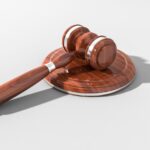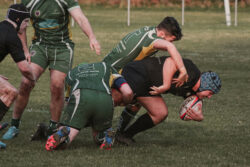4 Elements of Premises Liability: Who’s Responsible for Injuries?
In the intricate labyrinth of premises liability law, determining responsibility for injuries is a complex puzzle. This article will dissect the four key elements of this law, elucidate property owners' roles, explore exceptions for trespassers, and navigate the landscape of injury-related damages.

It aims to provide a comprehensive overview, enhancing understanding of the intricate dynamics at play in premises liability cases.
Key Takeaways
- Property owners have a duty of care and can be held liable for injuries on their premises.
- To prove premises liability, the injured party must establish that the property owner breached their duty of care, the breach caused the injuries, and there are injury-related damages.
- There are exceptions and special circumstances for trespassers, children, and attractive nuisances that can affect premises liability.
- Visitors also have a duty to protect themselves from injury, and their own actions can impact the outcome of a premises liability claim.
Understanding the Four Elements of Premises Liability
Understanding the four elements of premises liability involves recognizing the duty of care owed by the property owner. This duty requires that property owners maintain a safe environment, free of hazards. Identifying any breach of this duty is another key element. Breach of the duty of care may occur through negligence or deliberate action. Establishing the causality between this breach and the injuries sustained is also crucial. The resultant injuries must be directly attributable to the breach, demonstrating causality. Lastly, assessing the presence of injury-related damages is essential. Tangible damages related to the injuries must be evident.
The legal implications of these elements are significant, as they form the foundation of any premises liability claim. These elements, combined, shape the landscape of premises liability, influencing both legal proceedings and outcomes.
Examining the Role of Property Owners in Premises Liability
The role of property owners in situations involving personal harm or property damage is a critical aspect of law. This is particularly true when it comes to their duty of care and the potential breach thereof.
In premises liability cases, the duty of care signifies a legal obligation imposed on property owners. They are required to maintain their property safe for visitors, thereby reducing the risk of personal injury.
A breach of this duty of care can potentially result in the property owner's liability for damages. However, it is important to note that this liability is not absolute. It is contingent upon the injured party demonstrating that the property owner's negligence directly resulted in their harm.
This complex interplay between a property owner's duty of care and potential liability forms the crux of premises liability law.
Exploring Trespasser Exceptions and Special Cases in Premises Liability
Special cases in premises liability law, such as trespasser exceptions, present unique challenges and considerations in determining a property owner's duty of care and potential culpability for harm. These cases often revolve around the question of the property owner's liability for harm, even in instances where the injured party was unlawfully on the premises.
Property owners may have a reduced duty to protect trespassers, but are not completely exempt from responsibility. Liability can be assigned if the owner was aware of frequent trespassing and did not take reasonable measures to prevent it.
The concept of attractive nuisance can come into play, particularly when children are involved, highlighting the owner's duty to protect potential trespassers from known hazards.
These complexities underline the importance of expert legal advice in navigating premises liability cases.
Navigating Injury-Related Damages in Premises Liability Cases
In order to pursue a successful claim in a premises liability case, it is essential to clearly demonstrate the presence of injury-related damages. Such damages provide a tangible measure of the harm suffered, aiding in assessing compensation.
Economic damages, including medical costs and lost income, serve as quantifiable indicators of the injury's impact. Non-economic damages, which encompass pain, suffering, and emotional distress, although less tangible, significantly contribute to the overall harm experienced by the victim.
The role of insurance adjusters in these cases is pivotal. They evaluate the circumstances surrounding the incident and the extent of the damages to determine the rightful compensation. However, it is crucial to remember their primary goal is to minimize payouts for the insurance company. Consequently, expert legal advice is often necessary to ensure a fair evaluation.
Frequently Asked Questions
What Are Some Examples of Attractive Nuisances That Property Owners Should Be Aware Of?
Attractive nuisances, requiring vigilant safety measures and nuisance prevention strategies, include elements such as swimming pools, trampolines, and abandoned cars. These features, while appealing to children, pose significant risks.
Other examples encompass construction sites, heavy machinery, and wells or tunnels. These hazards necessitate proper fencing, warning signs, and regular inspections to prevent potential premises liability.
Ultimately, property owners bear the responsibility of ensuring child safety and mitigating risks associated with these attractive nuisances.
How Does a Property Owner’s Duty of Care Differ for Invited Guests Versus Unexpected Visitors?
A property owner's duty of care varies for invited guests and unexpected visitors. For guests, safety measures must be implemented to prevent foreseeable harm, constituting an obligation known as 'Guest Safety Measures.'
However, for unexpected visitors, the owner's responsibility is less stringent, needing only to ensure the absence of intentional harm or gross negligence. This forms the 'Unexpected Visitor Protocols.'
The distinction arises from the premise that guests have implied consent for safety, which unexpected visitors lack.
What Steps Can Property Owners Take to Reduce Their Risk of Premises Liability?
To mitigate the risk of premises liability, property owners are advised to obtain sufficient Liability Insurance Coverage. This serves as financial protection in the event of injury-related claims.
Additionally, conducting Regular Property Inspections to identify and rectify potential hazards can significantly reduce the risk of accidents. These proactive measures not only safeguard the wellbeing of visitors but also protect the interests of the property owner.
How Does Visitor Behavior Impact a Premises Liability Case?
Visitor behavior significantly influences premises liability cases. In situations where negligence on the part of the visitor is evident, liability waivers may limit the property owner's responsibility for resulting injuries. This principle, known as comparative negligence, may proportionally reduce compensation based on the degree of the visitor's culpability.
Consequently, a visitor's actions, such as disregarding safety warnings or engaging in risky behavior, can potentially minimize or nullify their claims for damages.
Can a Property Owner Be Held Liable for Injuries Caused by Natural Hazards on Their Property?
In relation to natural hazards liability, the scope of an owner's responsibility varies.
Property owners are generally expected to take reasonable actions to ensure the safety of visitors.
However, for natural hazards, the owner may not be held liable if they were unaware of the hazard, or if it was unforeseeable.
Nevertheless, if the hazard was known and no action was taken to mitigate the risk, liability could potentially be assigned to the owner.

This post has been generated by AI and was not reviewed by editors. This is Not legal advice. Please consult with an attorney.




